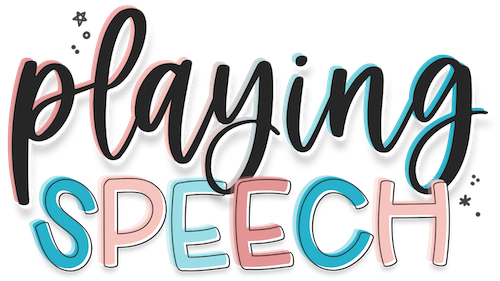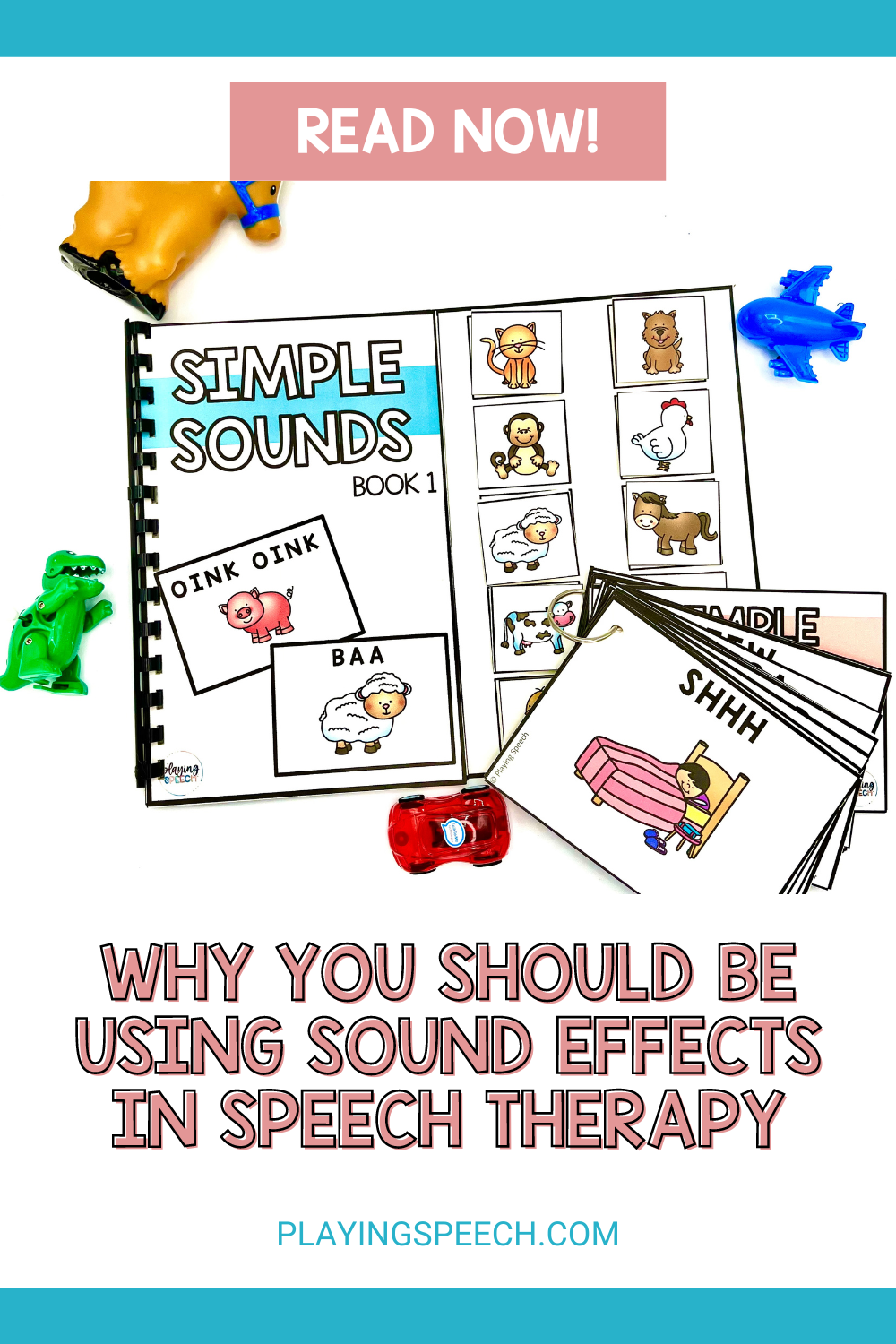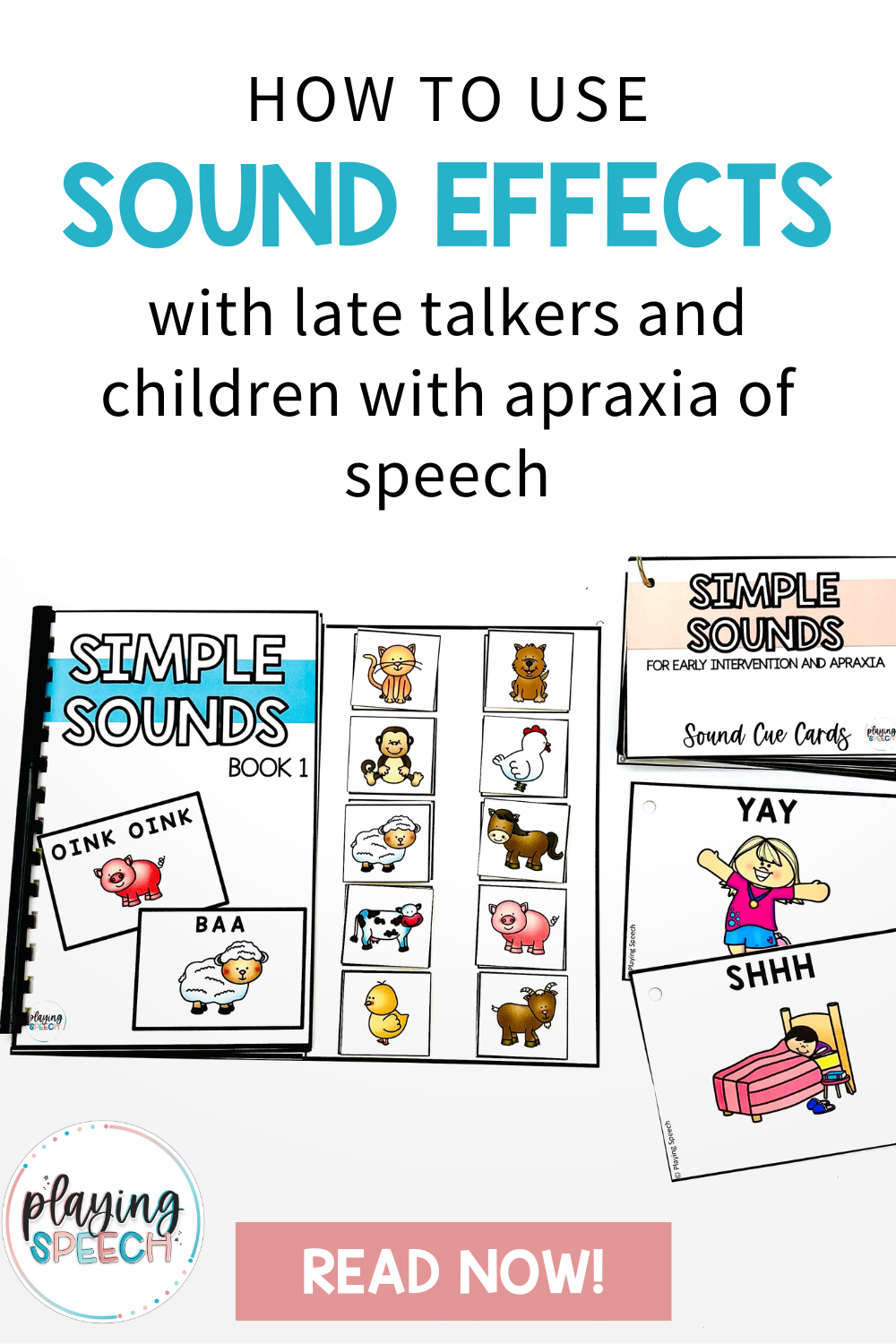Using Sound Effects, Symbolic Words and Exclamatory Words in Early Intervention and with Apraxia of Speech
I Love Using Sound Effects, Symbolic Words, and Exclamatory Words in Speech Therapy!
I use a lot of sound effects and exclamatory words when I am working with toddlers with speech delay and when I work with little ones with childhood apraxia of speech or suspected childhood apraxia of speech. They are magical. Even the child who is having difficulty imitating true words, I can usually get them to imitate a fun sound effect or exclamatory word with a little bit of work. I want you all to know the magic that is using these types of words in your speech therapy activities, too, if you are not already using them! I am going break down why and how I use these types of words in my speech therapy sessions with late talkers and children with childhood apraxia of speech or suspected childhood apraxia of speech.
What Are Sound Effects, Symbolic Words, and Exclamatory Words?
These types of words are short, simple words that are fun to say! They are usually used to take the place of a true word or words. For example, “moo” is used to represent a cow before the child can say “cow.” Or “yay” is used to represent excitement or pride in accomplishment before the child has the words to express those complex ideas. These types of words are usually easy syllable shapes with a variety of vowel and consonant combinations.
Why Do We Use Sound Effects, Symbolic Words, and Exclamatory Words in Speech Therapy?
These types of words are easier to say phonetically. This means the sounds and syllable shapes are easier to say than true words. We also use them because they are fun! These types of words are usually said in a playful way that draws children’s attention to them, and therefore, makes children more likely to want to imitate them. I also like to use them to help increase the sounds in a child’s repertoire. So, I will usually use these types of words with children who don’t use a lot of different sounds in their spontaneous speech. I will use these symbolic sounds and exclamatory words to try to stimulate new phonemes to add to that child’s repertoire!
How Should We Use Sound Effects, Symbolic Words, and Exclamatory Words in Speech Therapy?
Model these words throughout play and daily routines often. Repetition is key if we want a child to eventually imitate anything – be it a word, sound effect, or gesture. When we use these words, we say them in a very animated, excited voice to catch the child’s attention. Use a big affect! This means make your face look animated and excited as well. Try to pair these types of words and sound effects with a consistent gesture or body movement if you are able to do so. This will give the child a motor movement to imitate if the symbolic or exclamatory word is too difficult at first.
You can model them during book reading with toddlers and children with childhood apraxia of speech, too! When reading books with toddlers, you don’t have to read the book as-is. You can add in the sound effects and exclamatory words that you think would go nicely with the story or pictures. For example, if a child falls down and gets hurt in a story, simply say “Ouch!” with a big, exaggerated affect rather than read all the words on the page. If there is a baby in a bathtub in the book or an animal getting washed or playing in a stream, say, “Splash! Splash!”
BONUS Tip for Using Sound Effects, Symbolic Words, and Exclamatory Words…
You can turn some true words into sound effects. For example, the word ”wash” can be said in a fun, exaggerated way that makes it sound more like a sound effect than a true word.
Want help choosing Sound Effects, Symbolic Words, and Exclamatory Words for your Speech Therapy Activities?
I created this resource that has FIFTY sound effects, symbolic words, and exclamatory words for you to use in your speech therapy sessions with late talkers and children with childhood apraxia of speech or suspected childhood apraxia of speech. (Check out some photos of it below!) I made sure to create interactive books using these words, because in my experience kids LOVE interactive books. They keep little hands engaged and the children really enjoy matching the pictures. They also love the Velcro, lol. I can usually get children to attempt imitating the sounds when I use this type of activity!
I also included sound cue cards that you can use during play based speech therapy. And I made sure to include a list of accompanying gestures so that you can pair a motor movement with each sound! This provides a good starting point for children who are having difficulty with imitation in general.
“This resources is a great investment. These books are so simple to put together, and the cards and mini books are wonderful to leave with parents. Glad I purchased this one!”






